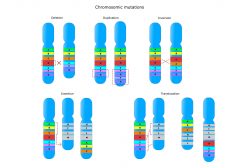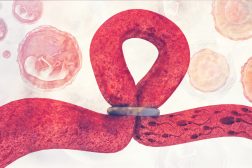Definition
noun
Twins with separate chorions and amniotic sacs in utero
Supplement
Twins may be classified according to the degree of separation in utero, i.e. according to chorionicity (placentae) and amniocity (amniotic sac): (1) dichorionic-diamniotic twins, (2) monochrorionic-diamniotic twins, (3) monochorionic-monoamniotic twins, and (4) conjoined twins. In dichorionic-diamniotic (DiDi) twins, the twins have separate chorions and amniotic sacs (hence, the name). This is very common among dizygotic twins. This type also has the lowest mortality risk, i.e. about 9%, among other types.1 DiDi twins form when splitting occurs on the third day post-fertilization.2 Dichorionic twins differ from monochorionic twins in a way that the latter share one chorion in utero. Monochorionic twins may be monoamniotic or diamniotic. Monochorionic-diamniotic twins would have separate amniotic sacs. If the monochorionic twins are in the same single amniotic sac they would be referred to as monochorionic-monoamniotic twins.
See also:
- twins
- monochorionic-diamniotic twins
- monochorionic-monoamniotic twins
- conjoined twins
- placenta
- amniotic sac
Reference(s):
1 Benirschke, K. (2004). “Multiple Gestation”. In Robert Resnik, Robert K. Creasy and Jay D. Iams. Maternal-Fetal Medicine: Principles and Practice (5th ed.). Philadelphia: W. B. Saunders Company. pp. 55–62.
2 Shulman, L. S., Vugt, J. M. G. van (2006). Prenatal medicine. Washington, DC: Taylor & Francis. p.447.







